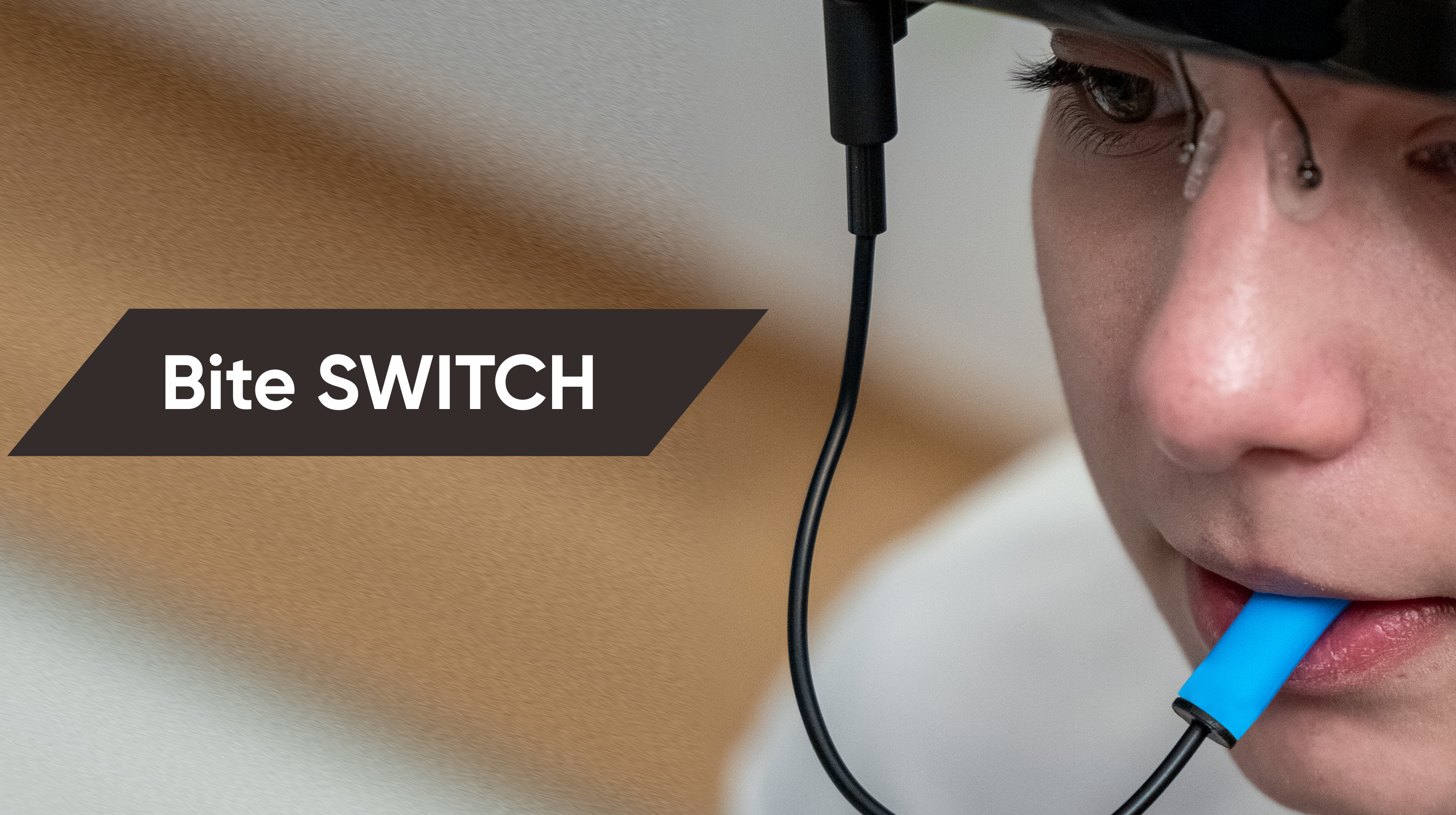
The GlassOuse Hands-Free Mouse is an assistive device designed for individuals with limited mobility, allowing cursor control through their head movements and selections via a bite switch. This innovative assistive technology aligns with medical, social, and functional models of disability, addressing functional impairments while reducing environmental barriers.
How does it work?
The GlassOuse Hands-free Mouse integrates a computer with a lightweight frame worn like glasses and features strategically placed sensors that track the user’s head motions. It connects to assistive devices via Bluetooth or USB. The sensors translate these movements into cursor actions on the screen. Users with physical limitations can accomplish actions like as clicking, scrolling, and dragging using certain head movements or a bite-click button on the device. This AT improves digital accessibility and enhances interaction for people with disabilities or limited hand mobility. When users move their heads to the center position, the cursor will be back at the center of the screen; they can direct the on-screen cursor in the desired direction, and the motion detection can be adjusted for precision. The built-in gyroscopic sensor ensures smooth and accurate tracking.
Instead of a standard mouse button, the GlassOuse has a bite switch that detects clicks when gently bitten. The switch is intended to be sturdy and sanitary, requiring only light pressure to activate. Users who are unable to use the bite switch may use other adaptive switches, such as sip-and-puff or foot-operated options.
Key Features and Accessibility Evaluate
Head-Movement Control
One of the GlassOuse mouse’s unique features is its head-movement control, which allows users to move the cursor on the screen by tilting their head in different directions. This eliminates the requirement for typical manually operated input devices. With regard to usability considerations, The intuitive way it uses head-tracking allows users with severe mobility limitations can use the device with little effort. However, it may necessitate calibration modifications, which could be challenging for first-time users.
This feature suggests the medical model of disability, which directly compensates for motor limitations caused by spinal cord injuries, cerebral palsy, and muscular dystrophy. Individuals can interact with digital settings despite physical restrictions since it provides an alternate control mechanism. On the other hand, the social model of disability focuses on how environmental barriers cause accessibility concerns rather than the impairment itself. Typical computer interfaces usually exclude people with restricted mobility. By incorporating hands-free operation, GlassOuse breaks down this obstacle and supports digital inclusion.
Bite-Click Button

Another distinguishing feature is the bite-click technology, which allows users to conduct mouse clicks by gently biting a pressure-sensitive switch. This reduces the requirement for finger dexterity while providing an efficient alternate input technique. Through the medical model lens, this function accommodates users with conditions such as quadriplegia or sclerosis, where finger movement is severely restricted. Another distinguishing feature is the bite-click technology, which allows users to conduct mouse clicks by gently biting a pressure-sensitive switch. This reduces the requirement for finger dexterity while providing an efficient alternate input technique. Through the medical model lens, this function accommodates users with conditions such as quadriplegia or sclerosis, where finger movement is severely restricted.
While the feature is extremely useful, its accessibility can be restricted by its cost. GlassOuse, which costs several hundred dollars, may be too expensive for many people, especially those without insurance or disability funds. This poses an equity concern, as access to assistive technology should be based on need rather than financial capacity.
GlassOuse is compatible with several operating systems, including Windows, macOS, and Android, making it an effective assistive tool. However, some specialized software packages may require additional settings, raising compatibility difficulties.
Challenges and Considerations
While the GlassOuse mouse greatly improves accessibility, there are certain limits to consider. For example, fatigue factors such as prolonged head movement biting engagement might produce discomfort, limiting long-term use. Also, there is a learning curve for people who are inexperienced with it and may need some time to adjust. To ensure hygiene and durability, the bite switch must be cleaned and replaced on a regular basis, which adds to the overall maintenance expenditures.
When addressing assistive technology and disability, it’s critical to use appropriate terminology. Person-first language, such as “people with mobility impairments,” prioritizes individuals over their problems. To embrace disability as an inherent part of their identity, some people choose identity-first phrasing, such as “disabled users”. Avoiding negative or outdated terminology such as “wheelchair-bound” keeps talks civil and inclusive.
Overall, the GlassOuse Hands-Free Mouse is a highly inventive and easily accessible technology that enables those with limited mobility by providing alternative control techniques. It fits a wide range of users by using head-movement tracking and bite-click functionality, which is aligned with both the medical and social models of disabilities. However, cost, fatigue, and maintenance issues must be considered while evaluating its total accessibility impact. As technology develops, further improvements in price and user comfort could make assistive devices such as GlassOuse more widely accessible.
References
Focus Care. “5 New Assistive Technologies for 2024.” Focus Care, https://focuscare.com.au/blog/5-new-assistive-technologies-for-2024.
GlassOuse. “GlassOuse 360 Bite Switch (Large).” GlassOuse, https://glassouse.com/zh-hant/product/360-bite-switch-large/.
YouTube. “GlassOuse Assistive Device Review.” YouTube, https://www.youtube.com/watch?v=X9IfKLZYIg0.